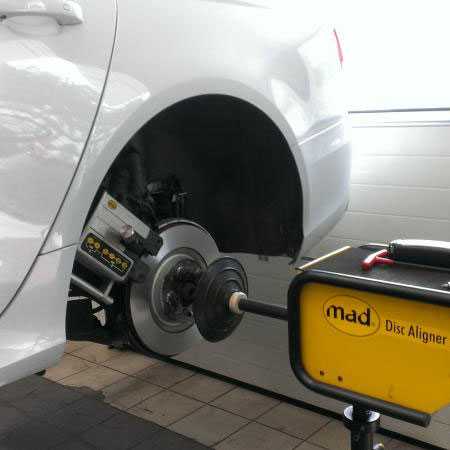Turning the brake rotors on the vehicle
Is it worth it and why it's done?
Rotor turning, also known as resurfacing, is a method that works well if the rotors are worn to a minimum extent, e.g. corroded or twisted.
It is worth knowing that with most brake rotors, the maximum permissible material loss on each side of the rotor is only 1 to 1.5 mm. Turning is worth considering, for example, when new brake pads are to be fitted and the previous ones left scratches on the rotor.
Before we perform such a service, we check the thickness of rotors installed in the car and compare it with the parameters of new components. If a new rotor is e.g. 20 mm thick and the thickness of the rotor installed in the car is close to 18 mm, then turning does not make sense, because the resurfaced part will have to be replaced soon anyway.
Turning is especially recommended in the case of noticeable rotor thumping when braking after replacing the rotors with new ones. This is caused by unprofessional replacement of the hubs, most often without measuring the hub runout. In this case, we are able to restore effective and comfortable braking.




